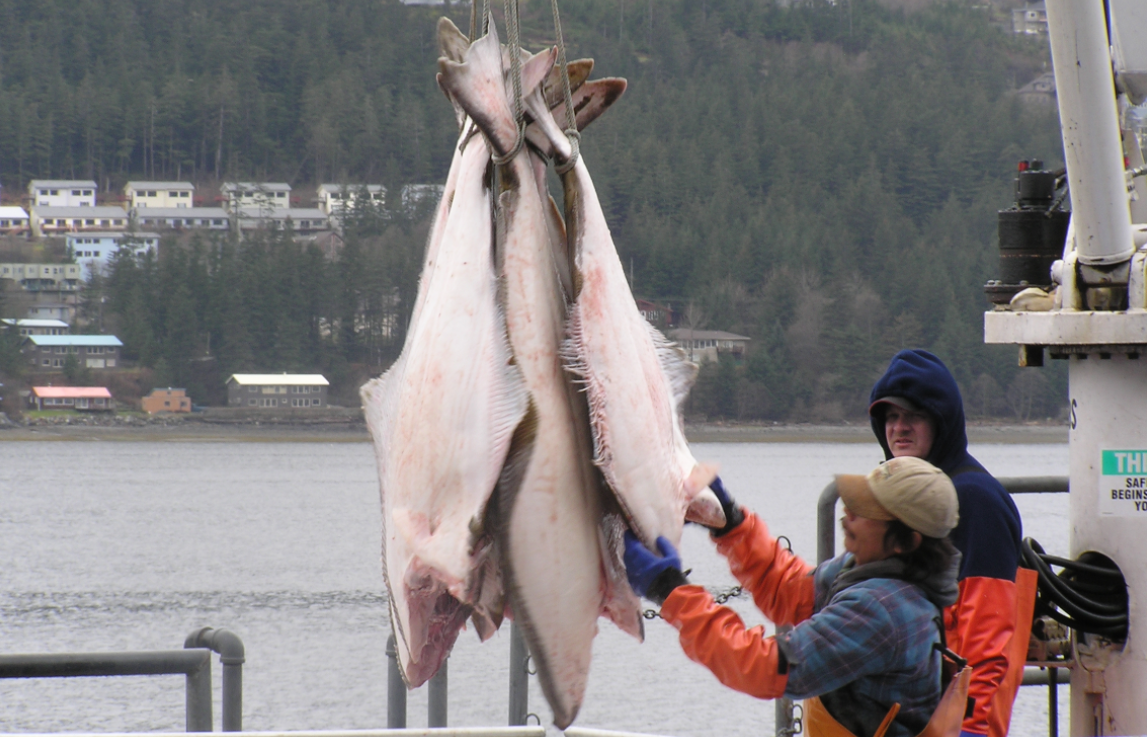When we go out to a restaurant and order halibut off the menu, it’s not often that we think about how it got to our plate. Our primary focus is service, presentation and, perhaps most importantly, taste. Although there are multiple places in the U.S. where halibut is caught, wild Pacific halibut dominates the market for a number of significant reasons.
Is Wild Pacific Halibut Sustainable?
Pacific halibut is native to the North Pacific Ocean. Commercial, recreational, and subsistence fishermen catch halibut. The fish, known as the largest species of flatfish, is desired by sport and commercial fishermen alike because of how much meat it offers. The flatfish can grow to over 8-feet long and over 5-feet wide.
The wild Pacific halibut population was in decline from 1997 to 2013. However, the population has increased over the last seven years. More so, it became clear that Pacific halibut is not overfished and that the regulations put forth by the International Pacific Halibut Commission ensure the recommended fishing levels are followed.
When it comes to sustainability, U.S. wild-caught Pacific halibut is designated as a smart seafood choice. The reason for that is due to U.S. regulations successfully ensuring that wild-caught Pacific halibut is responsibly harvested.
Why Pacific Halibut Is More Common Than Atlantic Halibut
Unlike Pacific halibut, U.S. wild-caught Atlantic halibut is fished at lower levels. Despite its rating as a smart seafood choice, the populations are below target levels. Its designation is a result of sustainable management rebuilding plans. These plans limit the amount of harvesting done for Atlantic halibut by U.S. fishermen due to prior stock getting overfished.
When it comes to fishing wild pacific halibut, the primary area of harvest is the Northeast Pacific Ocean, which spans from Northern California to Alaska. The region sees fishermen catch both Pacific halibut (hippoglossus stenolepis) and California halibut (paralichthys californicus).
There is not a meaningful difference between the two types of halibut other than the maxilla extends only to the edge of the eye of the Pacific halibut versus the maxilla goes beyond the California halibut’s eye. Similarly, other differences include the number of soft dorsal rays and the location of the fishes eyes.
Wild-Caught Pacific Halibut Vs. Farmed Halibut
Not unlike the rest of the fishing industry, the price of halibut was affected by the coronavirus pandemic. When the season began in March, the highest Pacific halibut price per pound was $5, $4.75 and $4.50 at Alaskan Southeast ports. If you’re interested in buying some halibut for yourself, check out our halibut comparison grids to find a good price.
Although wild-caught Pacific halibut remains popular, there are some who are encouraging that restaurants only sell farmed halibut. Although the push for farmed halibut is to preserve Atlantic halibut, restaurants in some cases included Pacific halibut when they made their final decision.
The call-for-action acknowledges the strong sustainability measures put in place for Pacific halibut. However, as environmental awareness rises, there may not be a viable market for wild-caught Pacific halibut or the fishermen who traditionally helped bring it to our tables.
Take note of our Affiliate Relationships that may exist with this page and companies listed on it.


